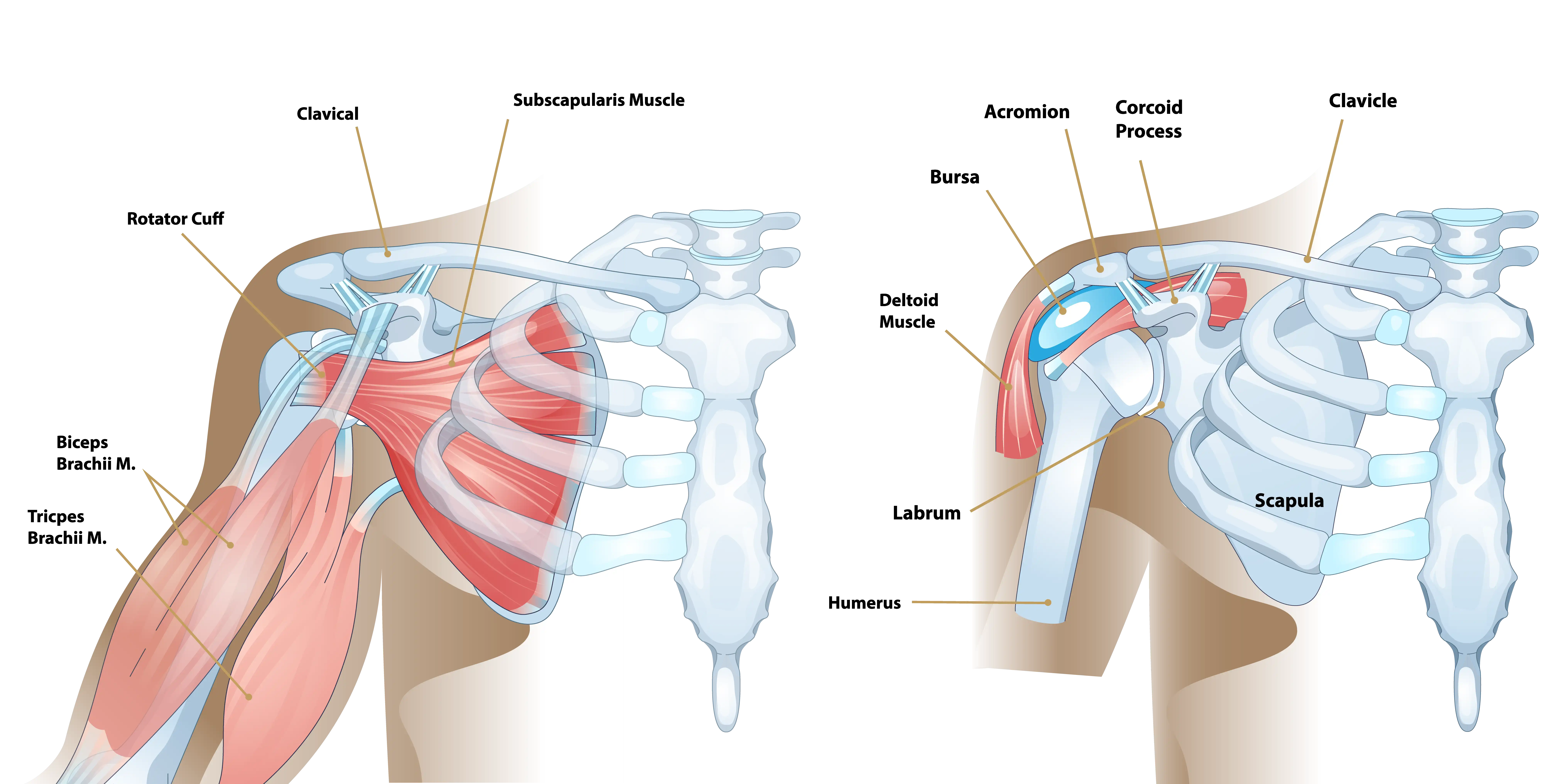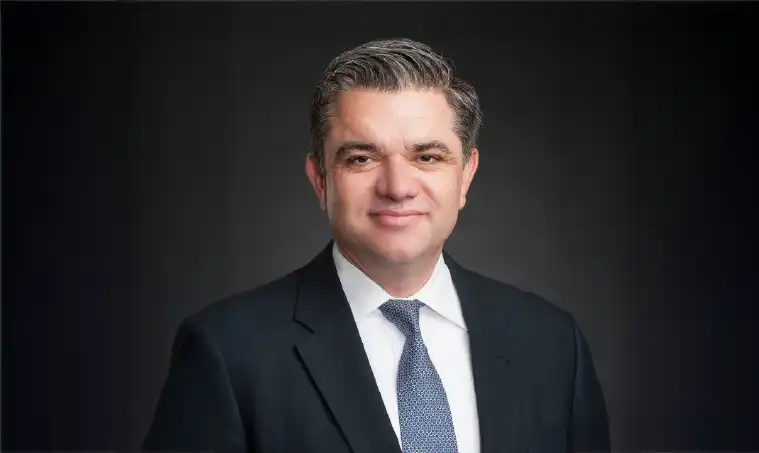Complex Shoulder Conditions
(510) 818-7200
Menlo Park, CA
Fremont, CA
Monday - Friday | 8:00 AM - 5:00 PM
Specialties
Discover Recent Posts
Shoulder health is vital for everyone, from young individuals to older adults interested in maintaining an active lifestyle while being able to sleep and perform daily activities without pain or limitations. The shoulder joint is the most complicated joint in the body with the widest range of motion enabled by a dynamic interplay of bones and soft tissues that may become injured or deteriorate over time. Sometimes, failed prior surgery or other treatment can lead to complexity with further treatment where an experienced specialist in shoulder treatment is valuable.
Dr. John Costouros, based in Menlo Park, California near Stanford University and with additional offices in Fremont, specializes in treating these intricate conditions and in offering personalized care to restore function and improve quality of life.
Shoulder Anatomy
The shoulder is a marvel of mobility, allowing actions like reaching, lifting, and rotating. It comprises three bones: the humerus (upper arm bone), scapula (shoulder blade), and clavicle (collarbone). The glenohumeral joint, a ball-and-socket structure, is the joint where the humerus meets the scapula’s shallow glenoid socket, deepened by the labrum, a fibrocartilage ring.
Four rotator cuff muscles (supraspinatus, infraspinatus, teres minor, subscapularis) and their tendons stabilize and move the joint. Ligaments, including the acromioclavicular and coracohumeral, link bones, while the acromion, a scapular projection, forms the acromioclavicular joint with the clavicle.
Bursae are fluid-filled sacs that reduce friction between moving parts. The intricate design of the shoulder enables versatility but leaves the shoulder vulnerable to complex injuries or degeneration when stressed or aged.

Complex Shoulder Conditions
Complex shoulder conditions encompass a range of issues, including chronic degeneration, traumatic injuries, or combined damage to bones, tendons, cartilage, ligaments, or the shoulder capsule. These conditions affect a wide range of people, from active young adults with overuse injuries to older individuals with age-related wear and tear. Dr. Costouros uses advanced diagnostics and tailored treatments to address these challenges, ensuring effective solutions for patients of all ages and activity levels.
Complex shoulder conditions often involve multiple tissues or chronic processes, causing persistent pain, stiffness, or instability. Below are four common conditions, detailing their causes, symptoms, treatments, and recovery timelines.
Adhesive Capsulitis (Frozen Shoulder)
Adhesive capsulitis develops when the shoulder capsule thickens and tightens, often due to prolonged immobility (e.g., post-injury), diabetes, or thyroid disorders. It’s common in adults over 40, particularly women. In many cases this condition may also occur in the absence of any trauma and can be missed by other clinicians. Patients experience progressive stiffness, deep shoulder pain, and limited motion, especially when reaching overhead or behind the back. Pain may worsen at night.
Non-surgical care includes gentle stretching, anti-inflammatory medications, and injections. Arthroscopic capsular release may be needed for persistent cases. Non-surgical recovery can span up to 18 months. Surgical recovery is more rapid but diligent therapy after surgery is critical to maintain the results obtained at surgery.
Shoulder Instability (Including Dislocations)
Shoulder instability arises when ligaments or the labrum loosen or tear, often due to a traumatic dislocation (e.g., from a fall) or repetitive microtrauma in activities like swimming or weightlifting. It affects young athletes and older adults with joint laxity. Patients experience a sensation of the shoulder slipping, recurrent dislocations, pain during motion, and a feeling of instability in certain positions.
Non-surgical care includes physical therapy to strengthen rotator cuff and scapular muscles. Arthroscopic stabilization (e.g., Bankart repair) is needed for recurrent instability. Non-surgical recovery takes 3 to 6 months. Surgical recovery spans 6 to 9 months although patients are generally allowed to resume normal high-impact activities at 5 months following surgical treatment.
Shoulder Impingement Syndrome
Impingement occurs when the rotator cuff tendons or bursa are compressed under the acromion, often due to repetitive overhead motions (e.g., painting) or age-related bone spurs. It’s common in middle-aged adults. Symptoms include pain when raising the arm, night discomfort, and weakness during overhead tasks. Stiffness may develop over time.
Non-surgical treatments involve physical therapy to improve posture and shoulder mechanics, anti-inflammatory medications, and injections. Most cases are successfully treated without surgery. Arthroscopic subacromial decompression addresses persistent cases. Non-surgical relief takes 6 to 12 weeks. Surgical recovery requires 2 to 3 months, with therapy to restore motion.
Labral Tears (SLAP Tears)
Labral tears, such as superior labrum anterior-posterior (SLAP) tears, result from trauma (e.g., a fall) or repetitive overhead motions which is typical in overhead sports and with athletes (e.g., tennis and baseball players). Patients report deep shoulder pain, a catching sensation, weakness, clicking and reduced range of motion, especially during lifting or throwing.
Non-surgical care includes physical therapy to stabilize the shoulder and strengthen surrounding muscles and anti-inflammatory medications. Arthroscopic repair or debridement is often required for active patients or severe tears. In some cases one of the biceps tendons which attaches to the superior labrum also requires treatment. Non-surgical management spans 3 to 6 months but may not fully resolve symptoms. Surgical recovery takes 4 to 6 months with rehabilitation.
Biceps Tendon Pathologies (Tendinitis or Rupture)
Biceps tendon issues, including tendinitis or rupture, stem from overuse (e.g., repetitive lifting), trauma, or degeneration. Tendinitis is common in younger active individuals, while ruptures often affect older adults. Symptoms include pain in the front of the shoulder, worsening with lifting, and, in the case of ruptures, a ‘pop’ sound followed by a visible bulge.
Non-surgical treatments for tendinitis involve rest, physical therapy, and corticosteroid injections. Ruptures may require tenodesis or tenotomy during surgery. Non-surgical recovery for tendinitis takes 6 to 12 weeks. Surgical recovery for ruptures spans 2 to 4 months, with therapy to regain strength.
Scapulothoracic Dysfunction
Scapulothoracic dysfunction results from abnormal scapula movement, caused by muscle imbalances, trauma, or poor posture. It affects both young active individuals (e.g., weightlifters) and older sedentary adults. Common symptoms include pain along the shoulder blade, grinding sensations, and weakness with arm movement.
Non-surgical treatment emphasizes physical therapy to correct scapular mechanics and strengthen muscles. Surgical bursectomy is rarely needed for persistent cases. Non-surgical recovery takes 4 to 6 months. Surgical recovery, if required, spans 6 to 12 months, with focused rehabilitation.
Complex shoulder conditions can disrupt daily life, but expert treatment can offer lasting relief. Dr. John Costouros, serving the San Francisco Bay Area but who also draws patients from around the world, delivers innovative care for patients of all ages.


